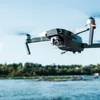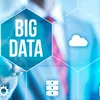Using drones, AI, and Big Data, India to draw up digital map
The herculean task was taken up by the Survey of India, part of the Department of Science and Technology, and is planned to be completed in two years.
India has initiated a project to digitally map the country with a resolution of 10 centimetres, using drones and technologies such as Artificial Intelligence and Big Data, a senior government official said on Monday.
The herculean task was taken up by the Survey of India, part of the Department of Science and Technology (DST), a few months ago and is planned to be completed in two years, the Department's Secretary, Prof Ashutosh Sharma said.
"...now we are equipping them (Survey of India) with the latest technologies like drones, Artificial Intelligence, big data analytics, image processing and continuously operated reference system", he told reporters on the sidelines of an event here.
Once the project is completed, the data will be available to citizens and to Gram Panchayats and local bodies, empowering them to use it in decision making and planning process.

The survey is currently in progress in Karnataka, Haryana, Maharashtra, and the Ganga basin.
"The entire Ganga basin from the beginning to the end, 25 km from either sides of the banks is being mapped with an accuracy of 10 cm," said Prof Sharma.
He stressed the need to have such a digital map.
"Even today we don't have a digital map of India of sufficient accuracy, but this (the new digital map being prepared) is (going to be) the basis for everything you do, whether we have to lay down train tracks, lay a road, put up a hospital, cleaning up Ganga, cleaning up Cauvery or any kind of development and planning," he said.
The official clarified to a question that the Indian Space Research Organisation (ISRO) was not part of the programme.
"This is a different technology. Satellite produces image, but this one is based on drones.
This is based on two technologies because you get higher resolution with that. It is not just getting an image by flying the drone.
A map is different from an image. We have to produce a map which takes into account the curvature," Prof Sharma said.
Speaking about the continuously operated reference system, he said the Survey of India has a reference point at every 20 km.
"Now with the digital technology, each of these points you put actually a beacon...a stick...a digital station... with the help of these digital stations, whose coordinates are well-established, even using your smart phones you can do your mapping with an accuracy of 10 cm," according to him.
Digital map is different from GPS (Global Positioning System), he noted.
While the GPS may have an accuracy of a few metres, the planned digital map -- with these reference points at every 20 km -- increases the accuracy manifold.
"So you can do mapping as you go up and down, walk around with a resolution of 10 cm or better," the official said.









